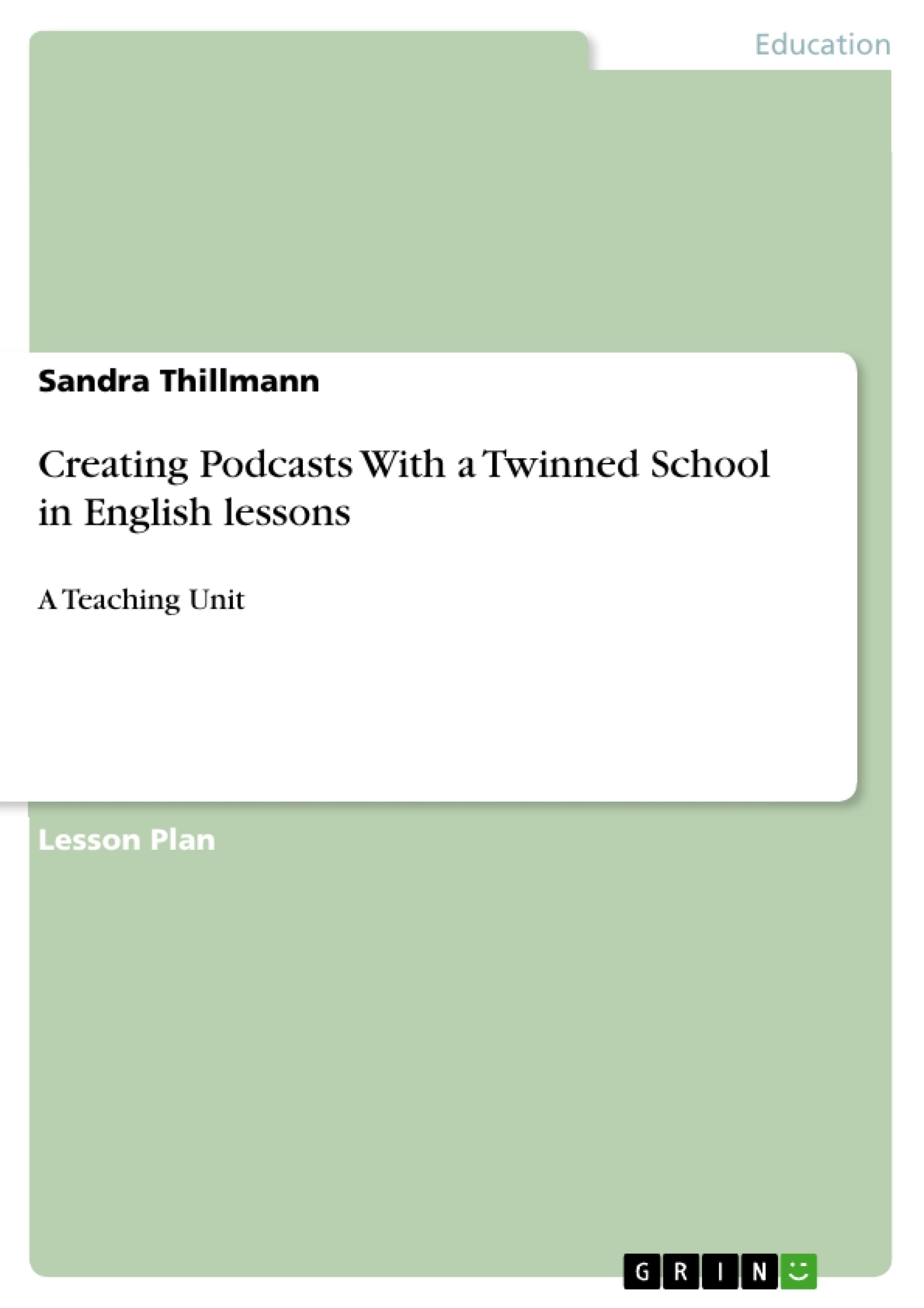This teaching unit has been designed for eighth graders at the gymnasium who learn English as a first foreign language. The unit contains six lessons of 45 minutes each. The general aim is to learn what podcasting is about, how to listen and subscribe to specific podcasts, and the most important point: How to create ones own podcasts and how to share them with students from a twinned school. After the six lessons the teaching unit won’t be finished. What follows is a steady setting-up of a correspondence between two twinned schools that is to say the German school, and a school from the USA.
In this term paper we will discuss what podcasting is in general and which learning possibilities we will have for the students when working with podcasts in the 8th class of a Hessian Gymnasium. In the next chapter we will contrast the New Media with traditional teaching methods and point out some advantages concerning the teaching project. Afterwards the requirements for the students and the learning objectives will shortly be illustrated. In chapter six we will investigate the curricular connections of the given teaching unit and finally chapter seven gives a detailed description of the teaching unit.
In the appendix one will find the six session plans.
Inhaltsverzeichnis (Table of Contents)
- Introduction
- What is podcasting?
- Learning Possibilities for Students
- New Media vs. traditional teaching methods
- Requirements and objectives
- Requirements for students
- Learning objectives for the students
- The Curriculum
- Curriculum References in general
- Curriculum References in detail
- Comments on the individual lessons
- References
- Appendix
Zielsetzung und Themenschwerpunkte (Objectives and Key Themes)
This teaching unit aims to introduce eighth graders to the concept of podcasting, covering how to listen and subscribe to podcasts, and ultimately, how to create and share their own podcasts with students from a twinned school. The project promotes a collaborative exchange between schools, fostering intercultural learning through audio communication.
- The benefits and applications of podcasting in language learning
- Exploring the intersection of new media and traditional teaching methods
- Developing student skills in audio production, media literacy, and communication
- Building intercultural understanding and fostering communication skills through twinned school collaborations
- Enhancing student motivation and engagement in language learning outside of traditional classroom settings
Zusammenfassung der Kapitel (Chapter Summaries)
- Introduction: The introductory chapter outlines the purpose and scope of the teaching unit, designed for eighth graders learning English as a first foreign language. It highlights the unit's focus on podcasting as a tool for language learning and intercultural communication.
- What is podcasting?: This chapter provides a comprehensive definition of podcasting, tracing its roots and distinguishing it from traditional broadcasting. It highlights the accessibility and diverse content of podcasts, emphasizing the potential for educational use.
- Learning Possibilities for Students: This chapter explores the pedagogical advantages of podcasting, focusing on its application in language learning, specifically in ESL programs. It emphasizes the role of podcasting in fostering various literacy skills and media literacy, as well as promoting student expression and motivation.
Schlüsselwörter (Keywords)
This teaching unit explores the intersection of language learning and new media, focusing on podcasting as a tool for educational engagement. Key topics include podcasting fundamentals, learning possibilities through audio creation and sharing, fostering intercultural communication, and exploring the potential of new media in education.
- Quote paper
- Sandra Thillmann (Author), 2009, Creating Podcasts With a Twinned School in English lessons, Munich, GRIN Verlag, https://www.grin.com/document/144635



